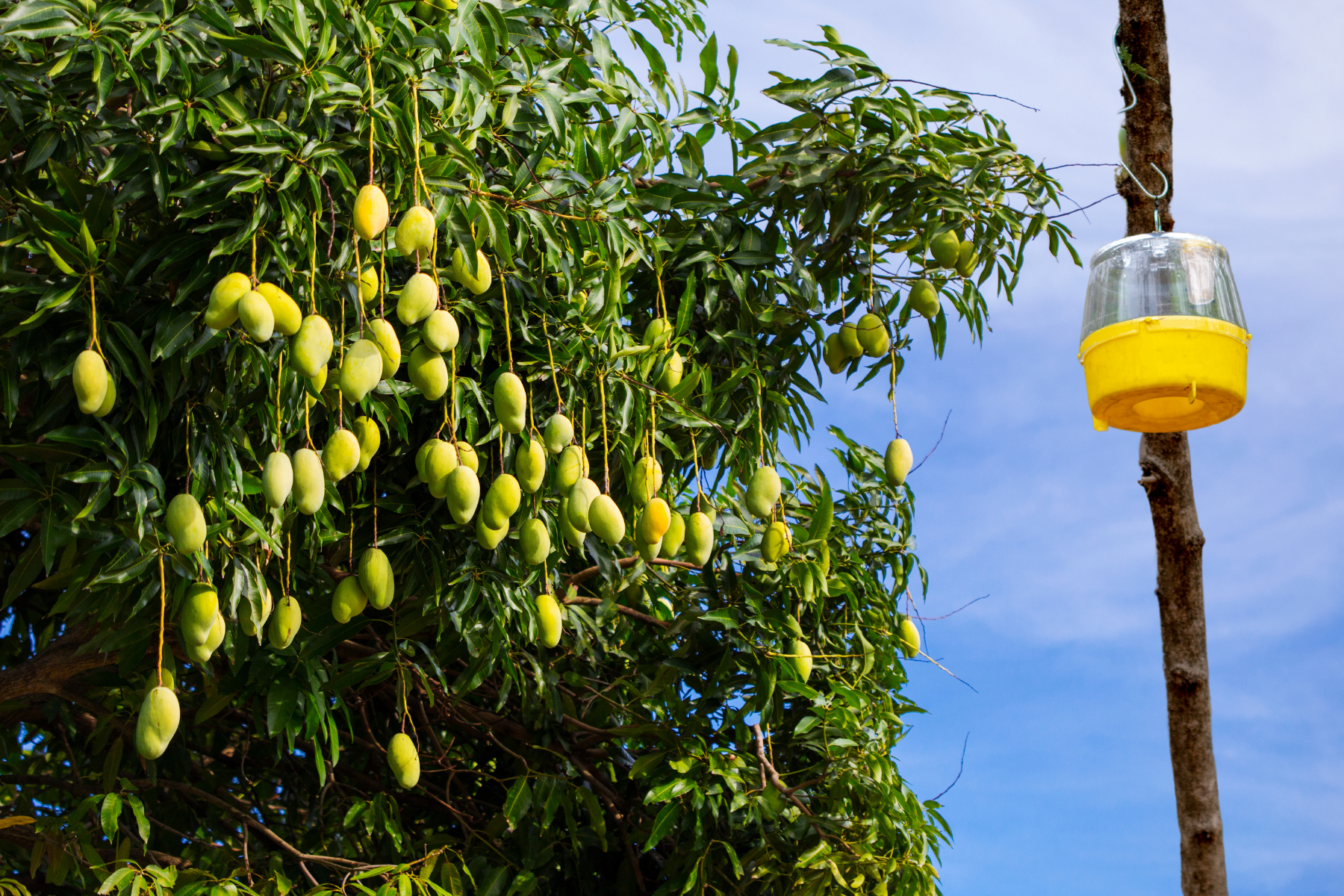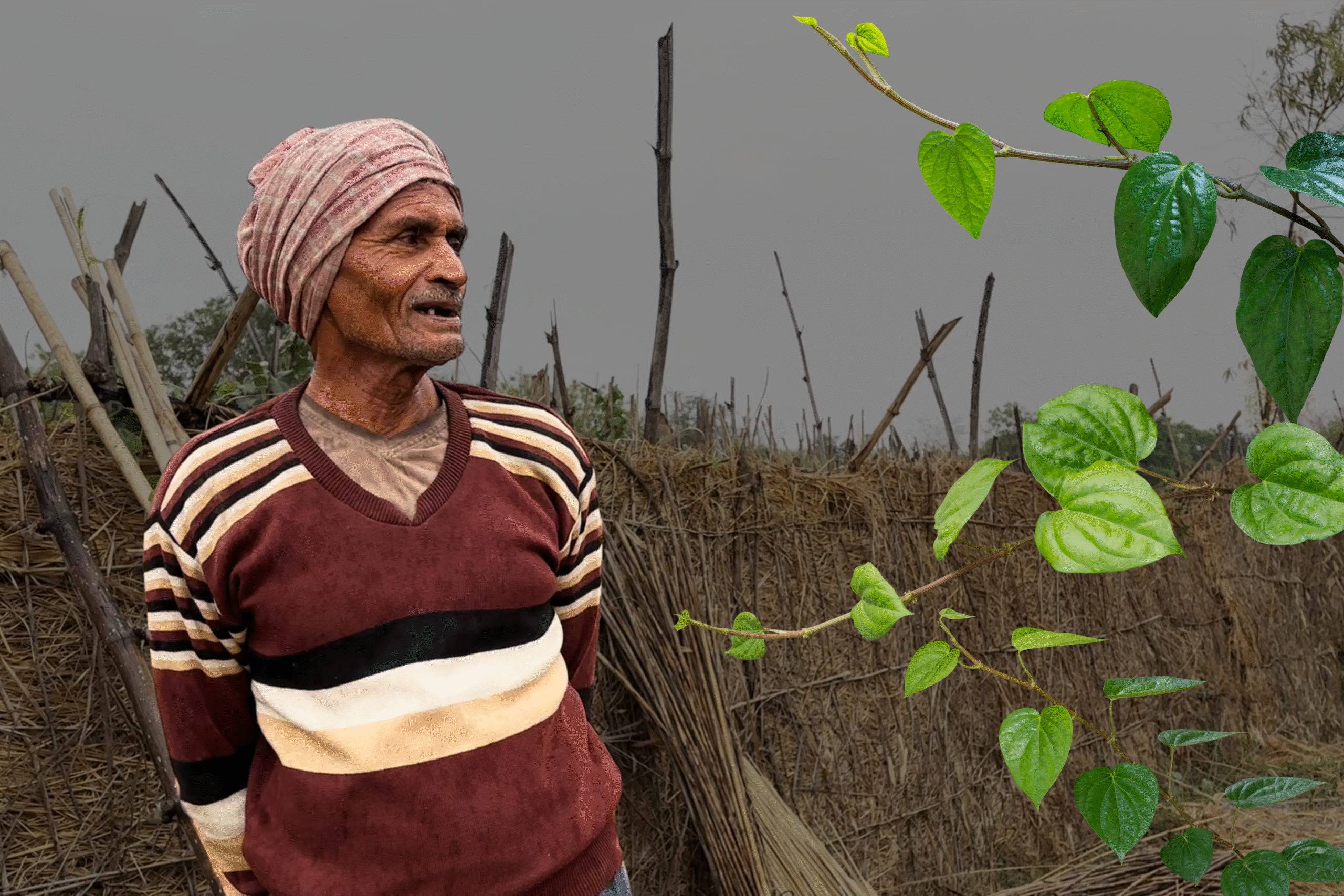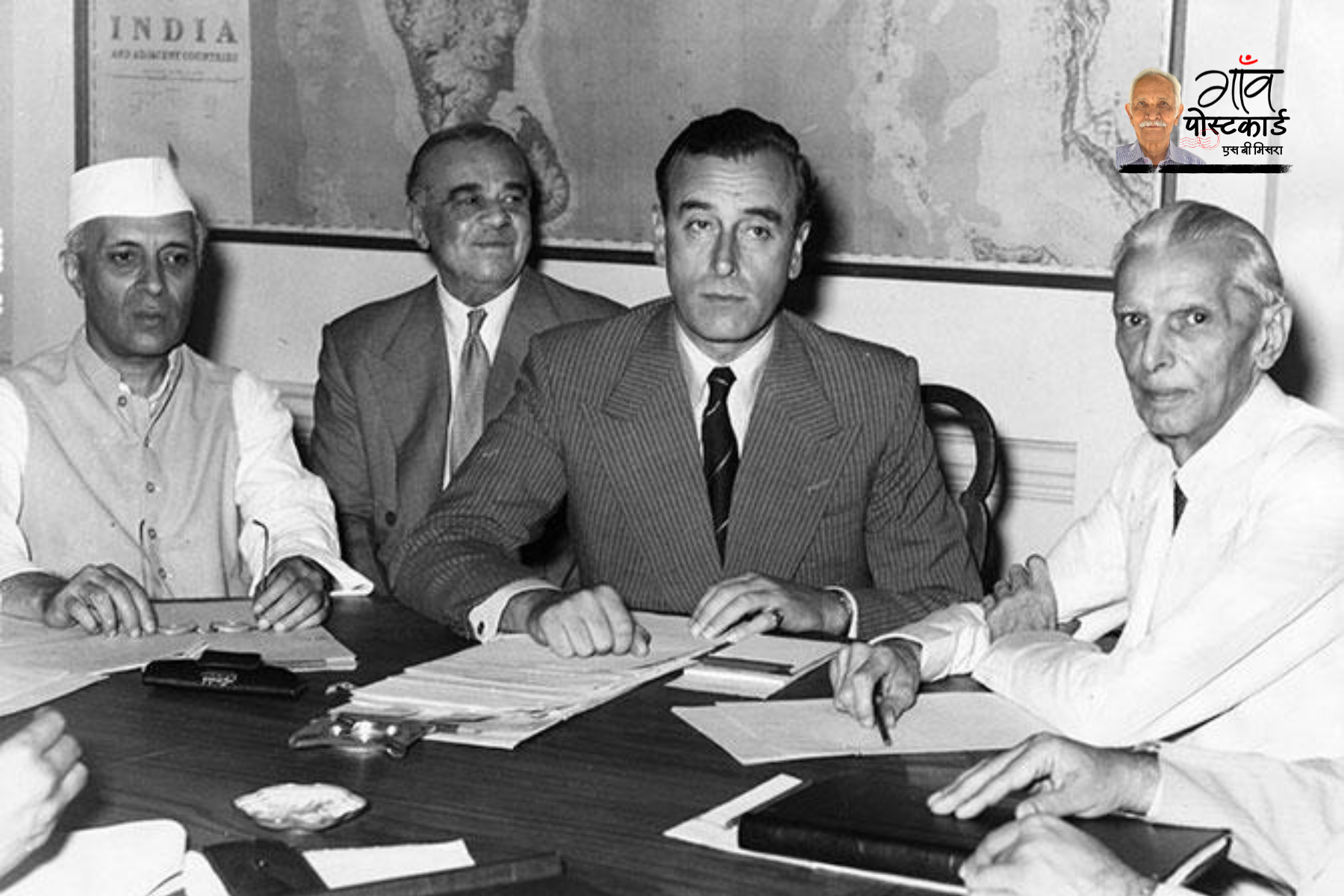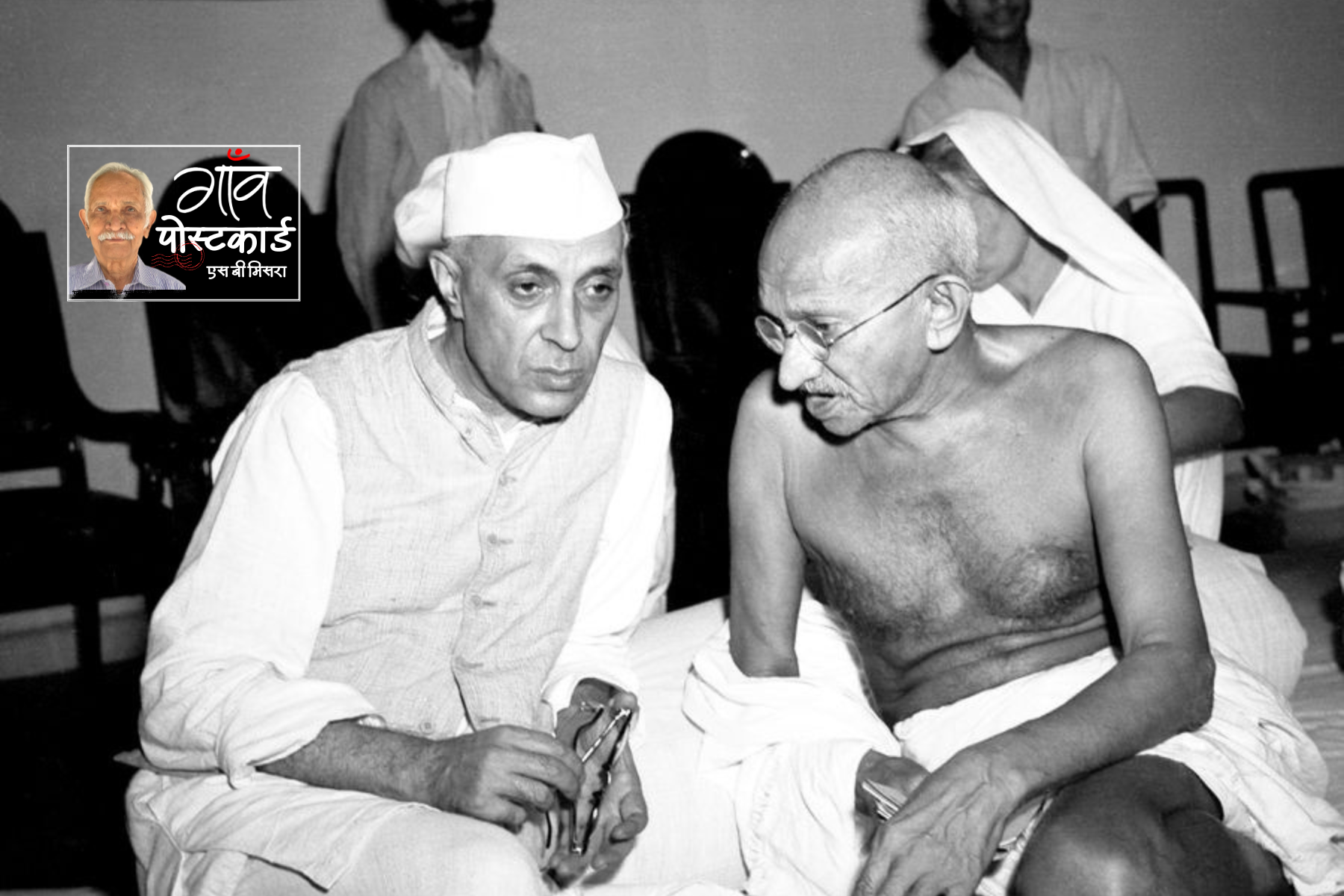Barabanki, Uttar Pradesh
In the last four months, Gita Devi spent several laborious days and sleepless nights trying to keep her paddy crop from wilting and dying. Heatwaves, followed by deficient monsoon rainfall, made it near impossible for the 45-year-old farmer to cultivate and irrigate her ten bighas (about 2.5 hectares) farm land. But, she did not give up as no produce meant no food for her family.
After toiling for weeks together, just when her paddy crop was ready for harvest, came extremely heavy and untimely downpour in the month of October, which flattened her entire crop and washed away her hopes of celebrating Diwali happily.
“For the last two years, the mahamaari [COVID-19 pandemic] had eclipsed all our happiness. This year, we were all hoping to celebrate Diwali but the non-stop rainfall has spoiled it all. Our crop needed another 20 days to ripen and be ready for harvest but it’s all damaged now,” Devi, a resident of Nanikpura village in Barabanki’s Fatehpur block, told Gaon Connection.
“The fallen paddy is lying in knee-deep water and has begun sprouting. There is no hope for profits, we are just trying to save some paddy by drying it in the sun so that we have some grains to eat,” she added.
India’s most populous state Uttar Pradesh, which was reeling under drought conditions since the beginning of the monsoon season in June and ended with a rainfall deficit in September last month, is now facing unprecedented rainfall.
Also Read: Two months of drought, followed by extremely heavy rainfall; farmers in UP in despair
According to the India Meteorological Department (IMD), in the month of October so far (October 1-10), Uttar Pradesh has registered an excess rainfall by 683 per cent — the ramifications of which have exasperated millions of farmers across the state.
Some districts have been battered badly. For instance, between October 1 and October 10, Bijnor district received 2,491 per cent above normal rainfall. Similarly, districts such as Bareilly, Budaun and Barabanki reported 2,308 per cent, 2,082 per cent, and 1,154 per cent respectively ‘large excess’ rainfall in the same period (see map).
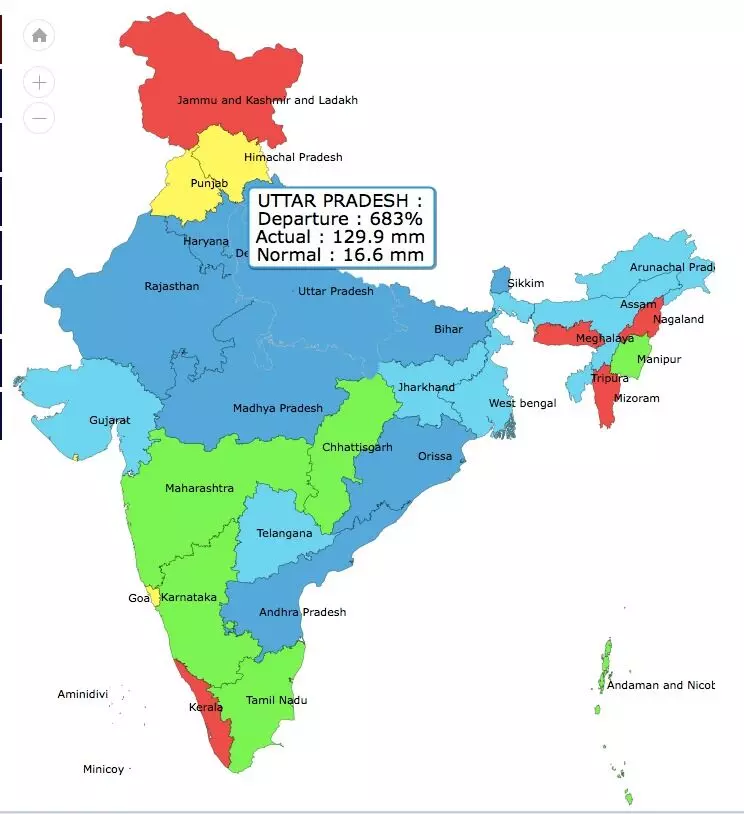
Predictably, farmers say they have no coping abilities left to deal with the vagaries of nature.
“Bhagwan saath nahi de rahe (the gods are not on our side). It is painful to spend money to get our field cleaned of our wasted crop. Why did I spend weeks trying to irrigate my fields,” Sagar Yadav, a farmer from Munimabad village in Barabanki, complained. “Last year the same had happened. We lost our crops, the officials visited the village, took photographs and returned. I haven’t received any compensation for my crop damage due to rains in October last year too,” Yadav said.
Such is the extent of damage to the paddy crops by the heavy downpour that many farmers whom Gaon Connection approached to take stock of their losses, said that they will have to buy rice in order to feed their families.
“Even after cultivating paddy on 17 bighas of land, I will not only have to buy rice for my family’s consumption but also buy fodder for my cattle. There are six people in my family. It feels like all our attempts to save our paddy are wasted. Our labour has amounted to nothing. It is frustrating to think of it,” Sudha, a farmer from Nanikpura village told Gaon Connection.
“I expected to earn Rs 100,000 to Rs 125,000 from my crop but now I am facing a loss of Rs 50,000. My crop is rotting in water and I have to invest extra money to get it cleaned by farm labourers otherwise the next crop will get delayed,” she added.
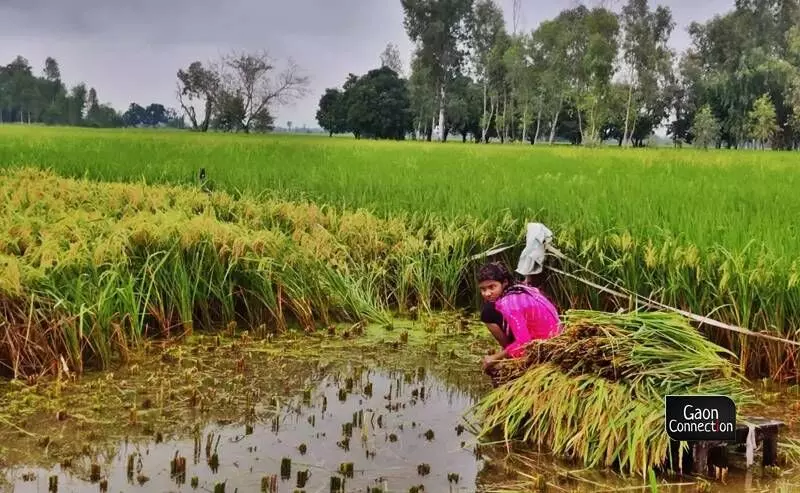
A farmer attending her field after heavy rainfall damaged her paddy crop.
Also Read: Farmers raise demands for compensation as UP, Bihar, Jharkhand gear up for ‘drought-like conditions’
Low pressure area resulted in heavy downpour
Mahesh Palawat, vice-president of meteorology and climate change at private weather forecasting website SkymetWeather, told Gaon Connection that the formation of a low pressure, which originated in the Bay of Bengal near the Odisha coast, has led to a heavy downpour in the Indo-Gangetic plains.
“The formation of a low pressure area in Odisha in the first week of October, which gradually shifted in the north-western direction towards Madhya Pradesh and later towards Punjab, has caused this excess rainfall in the states like Uttar Pradesh, Bihar, Punjab and Haryana. These rains are detrimental to the farmers as their standing crops which were about to be harvested have been spoiled,” Palawat told Gaon Connection.
Not just the kharif paddy crop, the extremely heavy downpour in October is likely to affect the next crop cycle too. “Potatoes are the next crop we are supposed to sow but due to the rotting paddy in a waterlogged field, even potatoes will get delayed,” Satrughan Lal, a farmer from Nanikpura village, said. “I was planning to get my daughter wedded this year and repay my bank loans. But all that is impossible as my crop has failed beyond recovery,” he added.
Also Read: Deficient rainfall and low paddy sowing fuels labour migration in Jharkhand
Meanwhile, Alok Kumar Sharma, a paddy farmer from Fatehsarai village in Banki block, complained that the rise in the costs of cultivating paddy is nowhere near what the government has fixed as the bikri rate (minimum support price, or MSP).
“After five years [2017], the government increased the MSP for paddy by Rs 100 in 2021 [an increase from Rs 1,940 to Rs 2,040. The cost of diesel for running the water pumps has gone up by almost double in these years. It is close to Rs 100 per litre now. The fertilisers have become very expensive too. All this is not covered by the MSP that the government provides. Even the cost of labour has doubled from Rs 200 a day in 2013 to Rs 400 now,” Sharma said.



